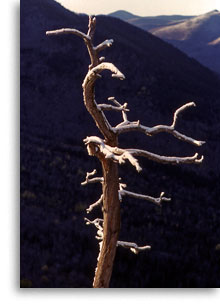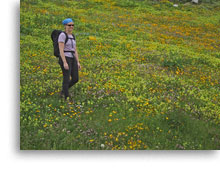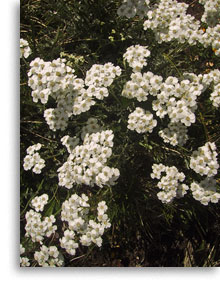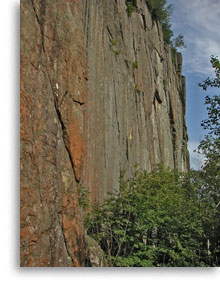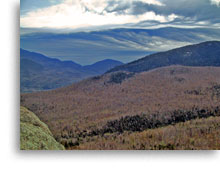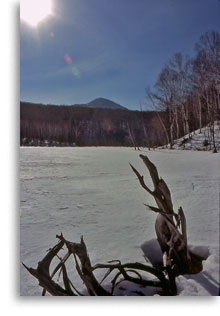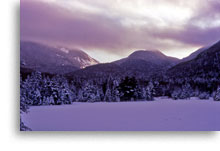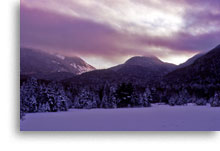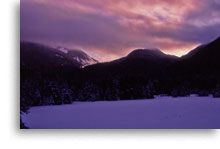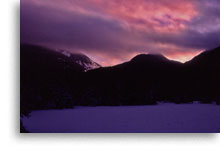
|
|
|
||||||||||

|
This page presents our views in four sections A Balancing Act In the Adirondacks, a variety of land use designations accommodate a variety of uses. Some lands are designated as wilderness, where the most stringent preservation standards are applied and others are protected less stringently, allowing uses that are not compatible with wilderness. The notion here is that wilderness is an important value but not the only important value. Clearly, there are places where more intrusive forms of recreation are both appropriate and desirable. Although we enjoy the tranquility of paddling a canoe or kayak on a remote pond, we also appreciate the other recreational opportunities afforded by our motor boat on less wild waters. We do not, however, feel entitled to use our motor boat in areas designated for non-motorized boats, where it would rudely disrupt the tranquility of others who seek the peace and quiet of wilderness paddling. Nor do we expect motor boats to give up all their waters to paddlers. The key to peaceful coexistence of these seemingly mutually exclusive uses is that each is legitimate within the context of a defined environment and neither should usurp the other’s space. Deciding on the size of each type of land use space is an exercise in compromise and we applaud the efforts of the many people who have struggled to come up with a workable balance in the Adirondacks. The balance will never please everyone but, having traveled to wild places on five continents, we have yet to see a place that strikes a better balance. Changing circumstances do justify changes in land use designations and, in the Adirondacks, there is a mechanism for those changes to take place. Regardless of what practices a user think should be permitted, all users of public wild lands have an obligation to constrain their activities to practices the are permitted on the type of land they are using. Most of our activities take place on lands designated as wilderness and most of the commentary on this page is appropriate primarily to wilderness areas where the prime value is to preserve the wild character of the land. We do not suggest that the practices we describe below are necessarily appropriate outside the context of wilderness use. |
||||||||||
|
Minimum Impact As more people visited wilderness areas, evidence of their passage began to become nearly inescapable and the adoption of minimum impact practices, along with clean-up efforts, was the only way to preserve these areas. The minimum impact concept was, and is, simple: leave the place in a natural state so it’s difficult to tell anyone has been there before. To achieve the benefits of minimum impact practices it is often necessary to forego convenience in the interest of preserving wildness. The intent here is not to deprive users of those conveniences but rather to foster the continued existence of wilderness so it can be enjoyed by all. Early on, some users resented the fact that minimum impact meant they would have to clean up their act, suffering some inconvenience in the process. These folks felt entitled to continue with their practices, often just because that’s how they’d done things for many years, but most people agreed that preserving the special places was worth the extra effort. By the early 1970’s, minimum impact outdoor use had become the prevailing outdoor ethic. The vast majority of users, the entire outdoor industry and most public land managers embraced this new ethic that “took nothing but pictures” and “left nothing but footprints.” It provided a viable solution for the continued existence of wild places. The value that drives minimum impact practices is wilderness preservation and that value must supercede all others for it to be effective. Economics dictate, however, that we can only afford to set aside a small percentage of lands to be kept as true wilderness and, because those lands are so few, their wilderness character is all the more valuable. For nearly 30 years, the minimum impact ethic went pretty much unchallenged, but that began to change with the recent move toward commercialization in the outdoor industry. Today, we are once-again faced with increasing impact on wilderness areas but this time the impact is being driven less by ignorance and more by greed. Today’s threats to minimum impact come not from those who would deny it works but rather from those who want to redefine it to accommodate what we call “rationalized impact.” Their values emphasize exploitation over preservation. They argue that they are entitled to exploit wilderness for economic, or other, gain and the impact they create is a justified byproduct of a legitimate use. We could not disagree more! The fact that this type of gain comes only at the expense of other users is an iron-clad argument against such use in our view. Minimum impact constrains some practices and completely eliminates others, in the interest of maintaining wild places for current users and preserving them for future users. Although minimum impact practices can not be precisely defined for every situation, they clearly preclude actions that significantly eliminate the attribute of “wild” from wilderness. Those practices, although they may be appropriate outside the context of wilderness, are simply not compatible with the primary value of preserving wild places. Controlling behavior in wilderness areas is a complex mix of legally enforceable regulations and a reliance on people to act responsibly on their own, with respect for others. The less people govern their own actions, the more regulations become necessary. We are convinced that the vast majority of people will act responsibly when they understand what that means and why it is important. When they are provided with role models that don’t embrace appropriate practices, these individuals can become unwitting accomplices in the undermining of the very places to which they are drawn. In effect, these people end up hurting their own interests because of their ignorance. With positive role models, emphasizing sustainable practices, this problem can be avoided and the need for regulations minimized. The following sections examine some of the issues alpinists face with regard to physical impacts on the environment and social impacts on other users, and how we address them in our role as stewards. The topics addressed are mostly specific to the climbing and skiing situations we deal with on a daily basis and are not intended to be comprehensive in scope. |


|
||||||||||



|
Physical Impact Physical Impact Related to Rock Climbing Practices In the early 1970’s the advent of “clean climbing” practices and equipment almost completely eliminated pitons from the sport within a few years – and ingratiated climbers with the growing minimum impact movement. Whereas previously climbers routinely carried hammers to drive and remove pitons, causing considerable damage to the rock, new forms of protection could be placed and removed much more easily and without rock damage. If you were “caught” using pitons at many climbing areas in the mid 1970’s you were likely to be chastised sternly by other climbers for your transgression. Clean climbing fit well with the new minimum impact ethic. In the early 1980’s, importing ideas and techniques from Europe where preservation of wild places is viewed very differently, “sport climbing” was born in America. Much like traditional top-roped climbing, sport climbing allows climbers to focus on overcoming the difficulties of the climbing itself without having to worry about the consequences of falling. By pre-placing permanent and reliable points of protection (usually bolts) at closely spaced intervals, the uncertainty of whether you can afford to fall or not while leading is largely eliminated. Climbers occasionally get banged up in sport climbing falls but those falls rarely produce serious injuries. Unlike traditional clean climbing, where your safety is sometimes contingent upon not falling, and if you do fall the results are contingent upon your protection placement skills, sport climbing does not usually involve “performance imperatives” and requires little or no margin for error. If you fall sport climbing you can usually just get back on the rock and try again. Because sport climbers no longer had to worry much about the consequences of a fall, these people could fall repeatedly on routes until they worked out the difficulties and finally completed the route without falls. Climbing standards skyrocketed as climbers employed repeated failure as the route to success. People began to climb things with their new skills and ethics that were inconceivable just a few years earlier. Unfortunately, in American wilderness areas, drilling holes in the rock and installing bolts is a flagrant violation of minimum impact principles. This practice did not go over well with people who valued minimum impact, including many land managers and traditional climbers. And, as if to fan the flames of controversy, many bolters chose to drill their holes with motorized, battery-powered drills. Before long, motorized drilling was banned in most wilderness areas and all bolting was heavily regulated or banned in many others. Today, there are still thousands of bolts, seeing regular use, in American wilderness areas but most new bolts appear on rock outside wilderness areas. It is important to realize that bolts are quite small and are, for the most part either invisible or unobtrusive to the casual observer. Often they are especially difficult to find when you are looking for them. In and of themselves they create little impact, but because they greatly diminish the “performance imperative” associated with traditional clean climbing, they attract climbers who would otherwise be unwilling assume the risks of climbing. It is these climbers who create the impact, by virtue of the fact that their numbers can overwhelm fragile environments. So, despite their small size, it is possible for bolts to put forth a large impact. Sport climbing is a legitimate form of climbing but, like motorized vehicles, its inherent nature makes it incompatible with the unique requirements of public wilderness lands and we support bans on bolt installation in these fragile areas. When climbing on wilderness lands we do not carry the equipment required to place bolts so it’s simply not an option. We truly enjoy sport climbing outside wilderness areas, especially in some of the great European sport climbing areas, where its impact is not at odds with the area’s values and its practice is welcomed. Although some ardent protectionists advocate the immediate removal of all bolts and other fixed climbing equipment from wilderness areas we believe that’s impractical and would mostly serve to rekindle controversy. Wilderness has been compromised by bolts, but their wholesale removal would be a gargantuan and expensive task that would create additional physical impacts. Permitting existing bolts and banning additional bolts strikes a compromise for the time being. As existing bolts deteriorate and become unsafe some may need to be replaced while others could be permanently removed, allowing rock, and climbers’ expectations, to gradually return to a wilder state. In a few wilderness areas, small numbers of climbers have seen fit to completely disregard wilderness values by cutting trees, blazing trails, chipping and gluing holds and otherwise making permanent and significant alterations to the natural environment in the interest of “improving” climbing. In most instances these actions are undertaken with the good intent of making climbing more convenient, and often their perpetrators believe they are doing a valuable service for the climbing community. In fact, many of these individuals are so narrow in their views that they simply can not understand how any climber could embrace other values. Fortunately most climbers, including ourselves, see the issue from a much broader perspective. Because these actions are based upon priorities that are incompatible with wilderness values and because, with few exceptions, these individuals have violated laws we can see no valid justification for this behavior. |
||||||||||
|
Physical Impact Related to Group Size Because of the limited available space at many climbing areas, campsites and other places where impact is concentrated, the effect of large groups can be especially pronounced. There is only one way to substantially reduce the impact of large groups and that is to travel only in small groups. Nearly any wilderness-appropriate activity can be enjoyed safely in a group no larger than three or four people. Physical Impact Related To Activity/Season Impact to vegetated areas, especially the fragile vegetation found high in the mountains, happens easily and quickly. This impact is often very obvious and sometimes leaves a permanent scar, providing lasting evidence of man’s presence. Avoiding sensitive areas, and avoiding overuse, can go a long way toward preventing this damage. Physical Impact & The Vicious Circle Of “Improvements” The second approach is to concentrate most of the impact in small areas that are sacrificed in the interest of preserving their surroundings. For heavily used areas, those that don’t get the chance to recover from man’s passage, this is usually the best option. Often these high-use areas are “improved” or “hardened” so they can withstand constant traffic. Improvements, such as trail work and established campsites, are sensible and practical tools in areas of high use, but they come at a cost. First, they provide stark evidence of man’s passage, despite the fact that they usually reduce overall impact significantly. Second, and more insipidly, although they protect the physical environment from the effects of use, they tend to encourage even more use. Improved trails offer the allure of easy travel and that attracts people who cause more physical impact and also create social impact. This vicious circle can be found in wild places around the globe. Because accommodating impact tends to encourage it, we believe efforts should focus more on discouraging impact directly. In our experience, when people are made aware of how physical impact is caused, they become eager minimize it. Rather than focusing on fortifying trails to handle heavy use, they focus on teaching people to how to avoid the impact to begin with. Once wilderness has been “improved” its wild character is lost – and “wildness” is rarely regained. Man’s encroachment has been a one-way street and, to some extent, it is inevitable. Because wilderness has so much to offer, we value its preservation and we do what we can to reduce man’s encroachment on this fragile and finite resource. The first step is to minimize physical impact. |

|
||||||||||



|
Social Impact Man is social creature and, for most of us, society plays a central role in our day-to-day lives. Because wilderness reaches beyond the boundaries of society, it can offer a unique opportunity for introspection and reflection in solitude. When solitude is removed, that opportunity evaporates. Social impacts change the nature of outdoor experiences. When the solitude of the mountains is rudely interrupted by a boisterous hoard, that’s social impact. Something uniquely wild is quashed by the all-too-familiar. The opportunity for quiet reflection gives way to the need for interaction with others. Our social nature leads people to congregate naturally and when most people attempt to orchestrate an event or experience, the importance of economy of scale is usually a foregone conclusion. A bigger event is somehow equated with greater success and more legitimacy. The more people influenced the better. Ironically, in accommodating economy of scale, the potential of the valuable experiences uniquely available in the mountains is crippled. Alpinism falls flat on its face in the context of large groups; the larger the group, the harder the fall. When groups exceed a certain size, the dynamics shift from being fundamentally reflective to fundamentally social. That size depends upon the activity and the amount of solitude each individual requires for reflection. Groups bigger than eight or ten people rarely provide what’s needed. For some outdoor activities, such as skiing or hiking, groups of up to eight or ten people can move through the wilderness without causing undue social impact on their own members or others they encounter. Activities such as climbing are less mobile and the effects of social impact are noticed more in smaller groups. By “taking over” a climbing area, a large group forces other climbers to go elsewhere. At their worst, groups occupy an entire climbing area – leaving no room for anyone else, and in some cases defending their sense of entitlement to exclusive use of the resource. Public lands are supposed to be a shared resource! By engaging in marginal practices, especially with novices, large groups endorse the appropriateness of these practices and make a mockery of the need for stewardship. Large groups are a major direct cause of marginalized wilderness ethics and they inherently endorse unsustainable practices. In the process, these groups send a clear message that “rationalized impact” rather than “minimum impact” is appropriate. The really large groups associated with organized events and festivals go beyond mocking stewardship. We could easily offer our services to large groups. We have the expertise, the equipment, the resources and the marketing know-how. However, we don’t offer these types of experiences because, beyond economic incentives, they hold little appeal for us and they demand compromises we are not willing to make. The inherently high physical and social impacts associated with these experiences is reason enough for us to avoid them. More importantly however, these experiences are the embodiment of negative role modeling and they move alpinism in a direction opposite from the one we’ve devoted our professional careers to for more than a quarter of a century. |
||||||||||
|
~ Mountain Adventures In the Adirondacks Since 1985 ~ |
|||
|
Alpine Adventures, Inc. |
(518) 576-9881 |
||



